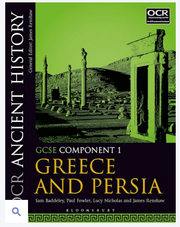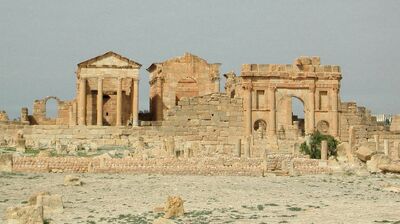Ancient History is only available as OCR GCSE. It is 100% exam based assessment so is accessible to home educators.
Classical Civilisation could be a complementary or alternative qualification.
Ancient History covers Roman, Greek and Persian History.
*For assessments in 2021 content was reduced, a similar proposal has been made for 2022 but not yet confirmed. Check the specification page for updates.*
OCR Ancient History GCSE
OCR GCSE Ancient History page and specification
- Exams from: June 2019
- Available in June
- Specification code: J198
Subject Content
Content is broken in to 2 components. The topic areas selected for this specification range from the 8th century BC to the 1st century AD.
Component 1: Greece and Persia
Compulsory period study: The Persian Empire, 559–465 BC
Choice of one Depth Study from:
- From Tyranny to Democracy, 546—483 BC
- Athens in the Age of Pericles, 462—429 BC
- Alexander the Great, 356—323 BC.
Component 2: Rome and its neighbours
Compulsory longer period study: The foundations of Rome: from kingship to republic, 753–440 BC
Choice of one Depth Study from:
- Hannibal and the Second Punic War, 218—201 BC
- Cleopatra: Rome and Egypt, 69—30 BC
- Britannia: from conquest to province, AD 43 — c. 84.
Assessment
100% exam based.
- Paper 1 - Greece and Persia - 1hr 45mins - 100 marks + 5 SPaG marks - 50%
- The examination comprises a mixture of short and long-answer questions, and is presented in four sections.
- Section A consists of 60 marks. Section A will assess learners’ knowledge and understanding of the Persian period study. 5 marks are available for SPaG in Section A.
- Students will need to answer one of Section B, Section C or Section D depending on which Greek depth study they have studied. Sections B, C and D all consist of 45 marks.
- Paper 2 - Rome and its neighbours - 1hr 45mins - 100 marks + 5 SPaG marks - 50%
- The examination comprises a mixture of short and long-answer questions, and is presented in four sections.
- Section A consists of 60 marks. Section A will assess learners’ knowledge and understanding of the Roman longer period study. 5 marks are available for SPaG in Section A.
- Students will need to answer one of Section B, Section C or Section D depending on which Roman depth study they have studied. Sections B, C and D all consist of 45 marks.
Resources
Textbooks

251.989x251.989px
Facebook group
Ancient History GCSE (Home Education) Facebook group
Websites
Distance Learning
Many home-educated students study Ancient History GCSE successfully using just the textbook and free online resources, but some find a distance learning course suits their family better, or want to use a tutor occasionally for marking essays or past papers. Course providers can be found on the Distance Learning Providers page.

